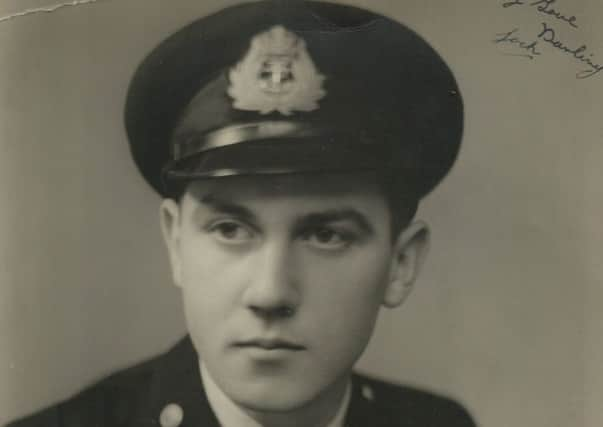Obituary: Lt-Cdr Roy Francis, Russian convoys veteran


Lieutenant-Commander Roy Francis was a survivor of HMS Edinburgh which was torpedoed and sunk while serving on the hazardous Arctic convoys in 1942. The ship was engaged in fierce German attacks in the Barents Sea with four tons of Soviet gold in its hold. The ship was returning to Scotland and carrying the gold in payment for war supplies. Francis was only 19 and the conditions the men had to endure in the Arctic were extreme. It was freezing, the wind was gale-force and there was light all day – making the ships constantly visible and easy targets.
In 2013 Francis received an Arctic Star at a ceremony in Wells. “The courage, selflessness and endurance of my comrades who didn’t make it back inspire me every day still and I would like to accept this medal on their behalf, as much as mine,” he commented, modestly.
Advertisement
Hide AdAdvertisement
Hide AdRoy Wallace Francis was the son of an army colonel. He attended Forest School and trained for the Royal Navy before, in 1939, serving on the cruiser Manchester in the Mediterranean.
Francis was transferred to the new battleship Duke of York which carried Winston Churchill to meetings with President Roosevelt. At one point Francis had to go into the state room to warn the prime minister that the ship’s main armament was about to be tested, and that he should not be alarmed.
On his return Francis was promoted to sub-lieutenant and joined HMS Edinburgh. The ship had been built in Newcastle and launched in 1938. In fact, Edinburgh was still in the Firth of Forth when German planes made their first raid on the naval bases at Rosyth in October 1939. The ship was then attached to the 18th Cruiser Squadron at Scapa Flow and Francis joined the vessel as it prepared to escort convoys to Murmansk. In April 1942 she left Scapa Flow to escort convoy PQ 14 to Murmansk. Of the 24 ships 16 were forced by “unseasonal ice and bad weather” to return to port and another was sunk by a U-boat. Edinburgh and the remaining seven vessels arrived in Murmansk in mid-April.
A week later HMS Edinburgh, which was the flagship of the escort, left Murmansk with 465 gold ingots in 93 boxes, all stamped with brilliant red stars. The value was put at £1.4 million (now around £70m) and the convoy was put under constant attack from German land forces and the Luftwaffe – a torpedo damaging HMS Edinburgh’s starboard bow.
The ship began to list heavily, but the crew, the official report confirmed: “Reacted quickly and competently by closing watertight bulkheads, which prevented the ship from sinking immediately.”
She was then hit by a second torpedo which wrecked her stern and steering equipment.
Francis and his crew-mates then had to endure a slow return journey to Murmansk under constant enemy fire. Off Bear Island she was so badly crippled she went round in circles. The crew put up a stalwart defence and the guns damaged a German battleship.
But a third torpedo struck her amidships and the order to abandon ship was given. Francis was rescued by HMS Harrier and taken back to Murmansk, and then to Scotland via Reykjavik. Altogether 58 people were killed.
Advertisement
Hide AdAdvertisement
Hide AdThe salvaging of the gold was riddled with diplomatic problems, as the wreck was listed an official war grave. But in the 1980s divers found nearly all the gold.
Francis was posted to the corvette Waveney and served on the equally demanding Atlantic run. After service on Operation Torch in North Africa he was transferred to the frigate HMS Papua. In February 1945 Papua was one of four frigates (including HMS Loch Shin) to sink a U-boat off Malin Head in Donegal.
After the war Francis was promoted to Lieutenant Commander. A severe storm in the winter of 1953 drove many of Ullapool’s herring-fishing vessels onto the shores of Loch Broom. The boats broke loose from their moorings and many were stranded on the beaches.
Francis arrived with a ship equipped with heavy winches and refloated 24 of the boats. His determined efforts (and those of the Royal Engineers) were commended in Parliament. “The result,” Sir William Duthie, the Member for Banffshire, said, “was that not a single loss was suffered, when 16 total losses had been expected.”
In the 1950s Francis was in charge of a secret operation in Suffolk regarding the damage done to triggers in the event of a nuclear accident. He retired in 1956 and set up a business on the Norfolk Broads building boats. He also pursued his passion for steam railways and built a railway line in his garden.
He became a leading campaigner against the Ministry of Defence’s refusal to award a campaign medal (until the Arctic Star was instituted in 2011) or to let Arctic Convoy veterans accept Russia’s Ushakov Medal for bravery. Francis was told he must not accept the Ushakov as this would “break the rules”.
He told reporters: “The Russian government wants to give us a bravery medal, not a campaign medal – there is a big difference.” He remained resolute, determined and his own man to the end.
Roy Francis married Marie Bartlett in 1942. She survives him, with their son and daughter.
ALASDAIR STEVEN